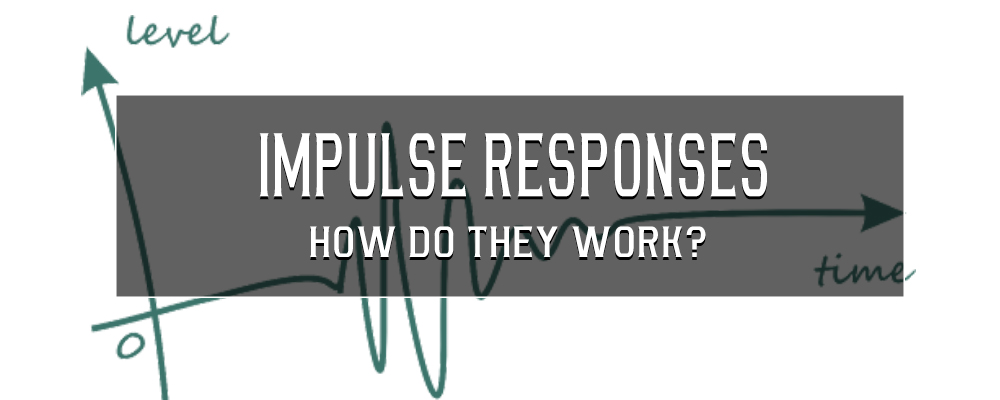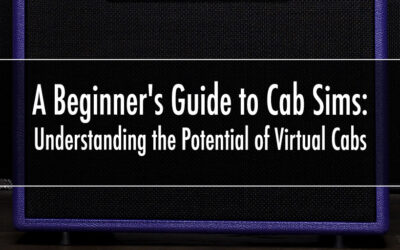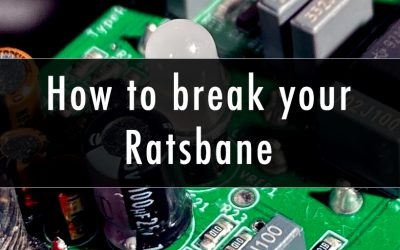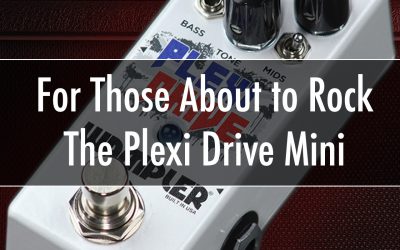
I guess you’ve seen Brian using Impulse Response technology for the longest time, and they seem to be everywhere these days, but if you are anything like me, you don’t really know what they are and how they work – so, I’m going to do a classic “Jason’s idiot guide” to IR’s, so I can learn about them as well.
An Impulse Response, in general terms, is a digital representation of a certain part of your signal chain, usually the speaker ‘environment’. It goes considerably further than that though, because when you are listening to a speaker you are also listening to the cab itself, the way the sound bounces around the front of the cab, the room it’s in and just about every other variable you can imagine when you start to think about sound bouncing around in front of you – this includes including the mic itself and the preamp it’s being recorded on, phase issues – this is why IR’s are considerably more accurate than a passive cab sim, that… well, if I am being honest, are just an EQ curve thrown across the output that is hopefully somewhat similar to the cab it’s representing. A lot of people cannot really tell the difference unless they go into studio conditions, but it’s one of those things that once you hear it, really hear it, there is absolutely no going back.
When capturing an Impulse Response, the fundamental procedure is to sweep through the entire frequency range through a speaker and the environment, so – if you are wanting to capture your favourite cabinet, you would place the microphone in front of the mic in the way you want it mic’d in the real world, so that may be a ’57 slightly off centre… Ideally, you would then send 20hz to 20khz through that speaker and capture the response, the actual response and characteristics of the speaker. All these EQ variables are extensive and cannot be reproduced by adding a static EQ curve across it, because that EQ curve will modify itself across the sweep of the frequency range of the environment that is being captured. We have to remember that we are capturing everything in the signal chain… the cab, the mic, the preamp – everything, and they all play their part in making a guitar tone, a guitar tone. This is why some IR’s are so expensive, because you could literally be buying an IR that was recorded in the greatest acoustic room in the world, through the perfectly broken-in speaker, in the most perfectly tuned cab, into a mind melting microphone and then running through a preamp that is worth more than your house. And this is just one capture…
The real magic of Impulse Response technology comes when you start to blend separate captures together. In the video Brian recently published (see below), you’ll see he uses 4 separate IR’s running in parallel to get the tone he wanted. First of all, he used a Creamback Celestion in a closed back Marshall 4×12”, mic’d with a Royer 121 on the front. Then he added an SM57 at the rear of the cabinet, then two different stereo room mics to give the whole thing space. The first one sounded awesome on its own, but once all four are in, they sound is simply enormous. It sounds alive, and if you really listen on a good set of monitors or though headphones, you’ll be able to hear the nuances of all four combined.
There is a lot of talk recently about the length of the IR and sample rate – so, here we go!
Length
A lot of this is academic, but it seems to make a lot of people happy. The reality of it, in my humble opinion, is that once you go over 200ms, you are pretty well unable to hear the difference in normal conditions – however, if you are in a studio and your guitar part is particularly high in the mix, and the room captured is a lively one and that vibrance is crucial to your tone, you will probably prefer the 500ms. Obviously, the 500ms capture will capture the entire environment to a higher standard – because more of it is being captured, especially if you are using ‘room mics’ within your set up. For close mic’ing however – which let’s face it, if you are playing live mostly or recording a band, you don’t really need that level of ambience. Here is an excellent video showing the differences!
Sample Rate
As per every digital audio application, the sample rate is vitally important. The higher the sample rate, the higher the quality of the response. CD’s play at 44.1, and you can get double that, which as you can imagine sound incredible. Consider sample rate like a clock face, even a stopped clock will be right twice a day. But anything outside that, it’s wrong. So, if you have clock that has a minute hand and the movement is not smooth, it’s right 60 times an hour, with a second hand (again, not a smooth movement), it’s right 60 times a minute, and if that hand is running smoothly, theoretically, the time is always right – well, right enough for our perception of time during our every day lives. If you consider the clock to be the same rate – the higher the sample rate of the clock, so that’s with the constantly moving hands, the sample rate of the display of the clock is much much MUCH higher than a stopped clock. Hope that makes sense!
Impulse Response technology is everywhere now, you’ll have them in your DAW and most speaker companies – Celestion are the forefront right now, offer models of their speakers. You buy these singularly, or in packs, and company’s like Two notes provide a more fully featured option of Virtual Cabinets, which allow you to choose the room, multiple mics and so on – once you get the bug for IRs, it will be the deepest rabbit hole you’ve been down in the longest time!



Impulse response is useful for linear systems, while most guitar effectvpedals etc. are non-linear… So be careful how you use IR and the conclusions you draw from it…
Thats useful info strat wiz, i haven’t used pedals yet, might have, and might not have realised the sound was ‘off’. I just plug amp into suhr RL box into a cheap, like real cheap IR pedal. Which for late night practice does me fine. I am researching for a 500ms solution, but don’t need stuff like amp modelling or other stuff, which is hard to find.
Having a lot of fun with Acoustic Guitar IR’s, so many different sounds and guitars to choose from go nuts!